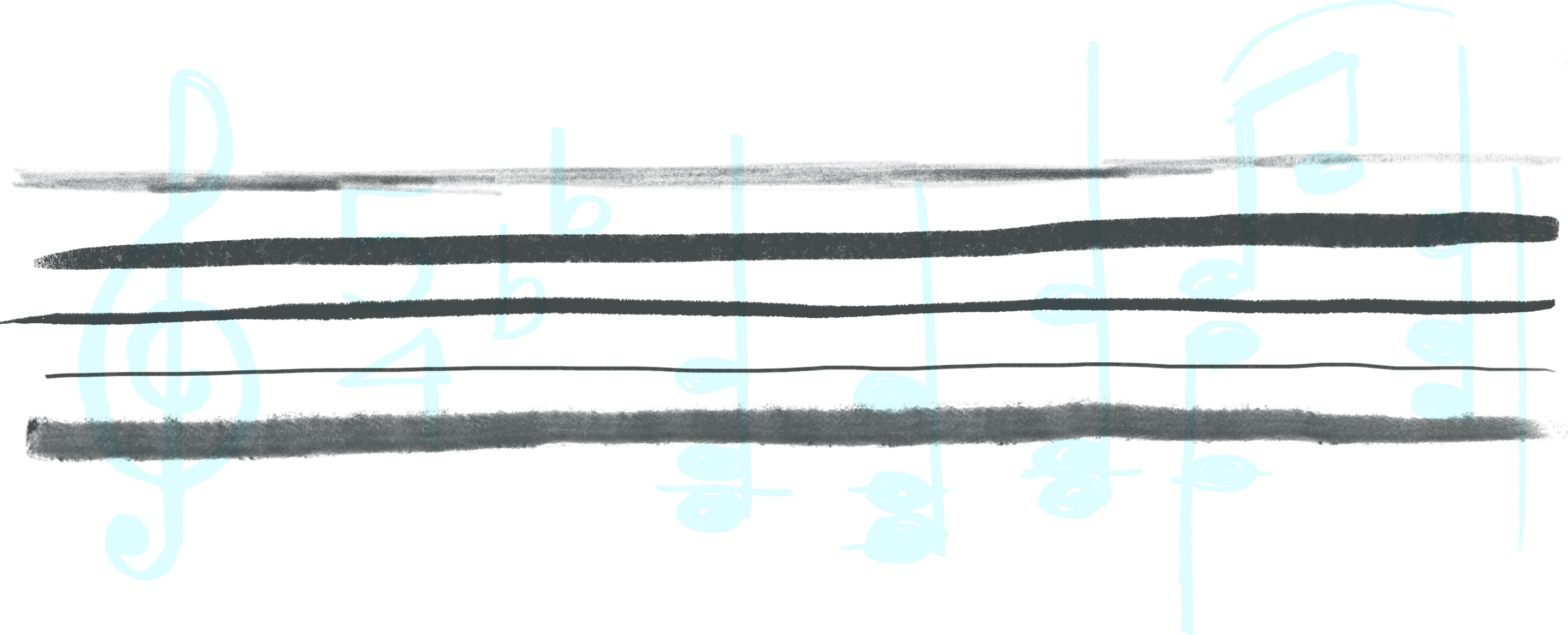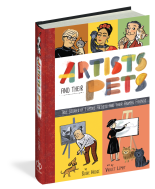
I love stories about creative people. Learning the details behind a specific artistic inspiration or collaboration always makes my heart beat a little faster. Yes, I am an art nerd, but I’m not exclusive; tales involving serendipty are also a personal favorite. Lately a story including all of these juicy elements has been unfolding around me. The story is too long for a single blog post, so I’ve broken it in half. Welcome to Part 1.
*
Klee, Kandinsky, and Music: 1920
While illustrating Susie Hodge’s new book Artists and Their Pets, I learned a lot of cool art history trivia. For example, Paul Klee and Wassily Kandinsky were friends and colleagues who had a lot in common. Along with their wives—and cats!—they lived at the Bauhaus at the same time.
 Klee’s cat Bimbo and Kandinsky’s cat Vaske used to study each other from across the Bauhaus campus courtyard, looking through their apartment windows.
Klee’s cat Bimbo and Kandinsky’s cat Vaske used to study each other from across the Bauhaus campus courtyard, looking through their apartment windows.

Klee and Kandinsky had music in common, too. Klee (shown above) was a violinist. As for Kandinsky (below): he could see music!

In Artists and Their Pets, Susie Hodge wrote:
Kandinsky had a condition called synesthesia. This meant that he saw colors in his mind when he heard music and other sounds.
Not everyone believes that synesthesia is a thing—but really, does it matter? Kandinsky interpreted sounds on canvas as he saw them in his mind, and his work looks like music. The world owes him a debt of gratitude for opening the door to abstract art. I personally am also grateful to Susie Hodge and duopress, publisher of Artists and Their Pets, for teaching me about Klee, Kandinsky, and the eighteen other artists featured in the book.
Note: this story about Kandinsky’s synesthesia was brand new to me. I just learned it. Seriously.
Professor Violet: 1998
Way back in 1998, I was about to teach my first-ever university art course: 2D Design, a required foundational class. In a nutshell, 2D Design teaches artists how to use color, value, pattern, shape, placement, line, etc. to move the viewer’s eye around a two-dimensional composition, hopefully moving emotions in the process.
Twenty seats were filled with incoming art students who had recently arrived from all over the world.  Soon they’d begin dying their hair and piercing body parts, but in those first weeks of the fall term, they looked clean cut and bashful—except for a one or two young goths, who were ahead of the game. 😉
Soon they’d begin dying their hair and piercing body parts, but in those first weeks of the fall term, they looked clean cut and bashful—except for a one or two young goths, who were ahead of the game. 😉
 Their interests ranged from sound design to historic preservation of architecture. Of course, the more typical art majors were also represented: painters, illustrators, fashion and graphic designers, etc. A broad range, some of whom had no interest at all in drawing. Or 2D design. They were there to fulfil a schedule requirement, not because they were interested in the subject. In fact, some were openly annoyed to be there. And I was completely new to teaching. It was terrifying.
Their interests ranged from sound design to historic preservation of architecture. Of course, the more typical art majors were also represented: painters, illustrators, fashion and graphic designers, etc. A broad range, some of whom had no interest at all in drawing. Or 2D design. They were there to fulfil a schedule requirement, not because they were interested in the subject. In fact, some were openly annoyed to be there. And I was completely new to teaching. It was terrifying.
*
Imagine a World Without Pinterest
If the internet existed in 1998, I hadn’t found it. Google wasn’t available as a teaching resource. My colleagues were very generous with their lesson plans, but like any creative person, I had some ideas of my own that I wanted to try out. I concocted tons of homework and in-class assignments that term, but I only remember one. And it involved music.
Professor Violet’s Introduction to LINE

On LINE Day I arrived on campus armed with my husband’s boom box, a stack of CDs, and a giant box of art supplies. The students trickled in to find me organizing an array of line-making tools on the big teaching desk at the front of the classroom. Markers, every imaginable type of charcoal, brushes with pots of ink and tubes of paint, colored pencils, graphite, pastels, etc. were arranged in tidy rows. Handing out sheets of paper, I explained:
Handing out sheets of paper, I explained:
We will be listening to music today. Every song will make you feel a certain way. Get a sense of the mood, and then grab a tool and make a line that match the mood. Let the music inspire the line.
For the next several hours the classroom was filled in turns with classical piano, discordant jazz, opera and elevator muzak. Mimi’s aria from La Bohemme raised the industrial ceiling tiles. We listened to Phillip Glass, The Red Hot Chili Peppers, Ella Fitzgerald, The Talking Heads, Patsy Cline… and interpreted every song by making lines on paper.
 I was nervous. At first they all just sat there. I paced. But then, little by little, they started drawing. A gentle young sound designer from somewhere in the south—or maybe he was from California—met my eyes with a smile. His name was Michael. He had crazy long curly hair, and antique glasses. “I never knew something as simple as a line could be so expressive,” he said. And my heart melted, and I stopped pacing. Mission accomplished.
I was nervous. At first they all just sat there. I paced. But then, little by little, they started drawing. A gentle young sound designer from somewhere in the south—or maybe he was from California—met my eyes with a smile. His name was Michael. He had crazy long curly hair, and antique glasses. “I never knew something as simple as a line could be so expressive,” he said. And my heart melted, and I stopped pacing. Mission accomplished.
Using music as an inspiration for art is a fairly obvious prompt. Probably millions of art teachers have employed a similar technique! I don’t mean to suggest personal greatness in teaching. No way, never. It’s just that this story, which is one of my fondest professorial memories, came to mind when I learned about the bond between Klee, Kandinsky, and music… and as mentioned at the beginning of this post, there is more to this story! When you read the rest, it will all come together.
Stay tuned for Part 2 (spoiler: it involves composer Modest Mussorgsky, my son, and another drawing prompt). In the mean time: Happy reading, happy learning, happy drawing!
*
__________________________________________________
 *
*
To order a copy of Artists and Their Pets, click here!
Artists and Their Pets was written by Susie Hodge and illustrated by Violet Lemay for duopress in 2017, and is distributed by Workman Publishing.
All illustration in this post was created by me, Violet Lemay. Please do not use without permission. 🙂




Cool!